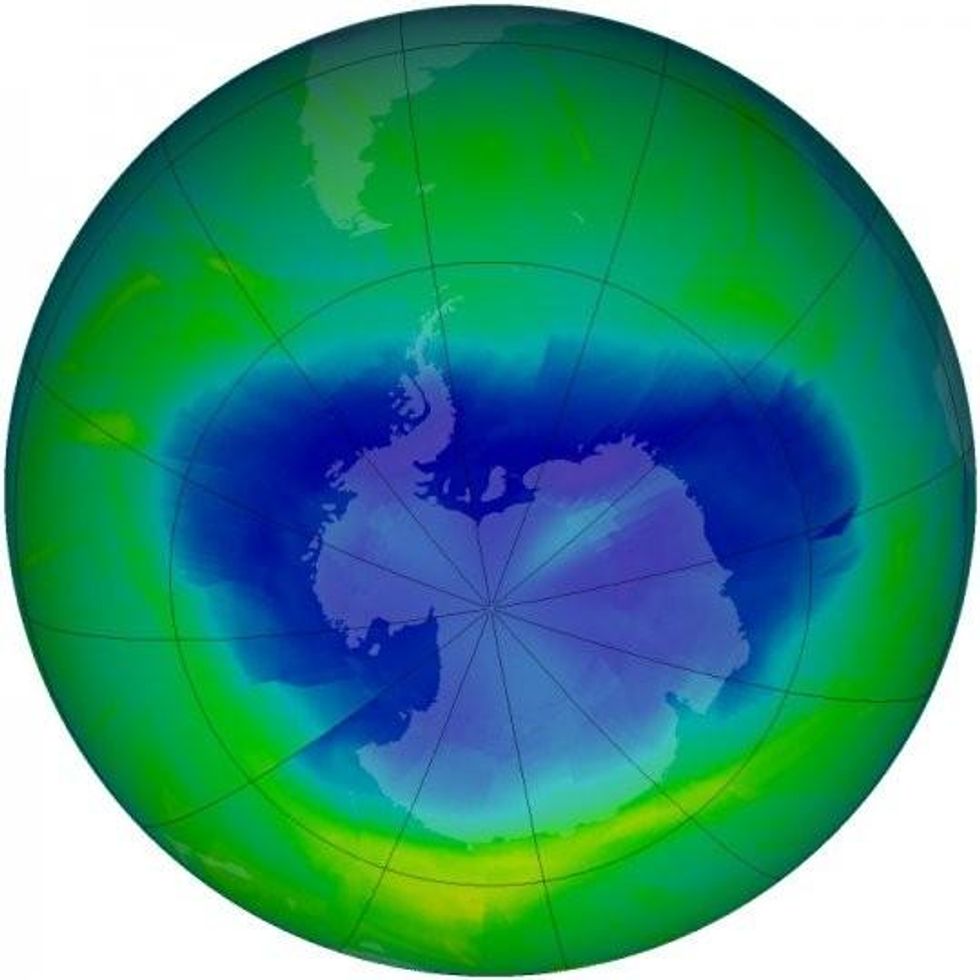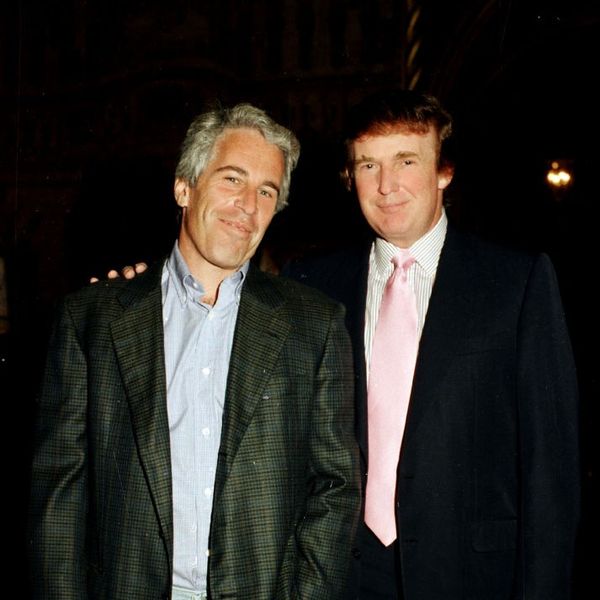'Very Worrying': New Ozone-Destroying Gases Discovered
"We don’t know where the new gases are being emitted from and this should be investigated."

The research from scientists at the University of East Anglia was published Sunday in the journal Nature Geoscience.
By comparing current air samples with air samples from "polar firn" snow in Greenland, perennial snowpack which offers archival information, the researchers discovered three chlorofluorocarbons (CFCs) and one new hydrochlorofluorocarbon (HCFC).
The Montreal Protocol, signed in 1987, banned CFCs and set phase-out deadlines for HCFCs. "This has resulted in successfully reducing the production of many of these compounds on a global scale," stated lead author Dr. Johannes Laube from UEA's School of Environmental Sciences. "However, legislation loopholes still allow some usage for exempted purposes."
"The identification of these four new gases is very worrying as they will contribute to the destruction of the ozone layer," Laube stated.
They also found that two of the four gases are significantly increasing.
"What's more, the three CFCs are being destroyed very slowly in the atmosphere--so even if emissions were to stop immediately, they will still be around for many decades to come," he added.
The scientists estimate that over 74,000 tonnes of the combined chemicals were released before 2012, though the source is unclear. Because they were not present in the atmosphere until the 1960s, the researchers believe they are human-made.
"We don't know where the new gases are being emitted from and this should be investigated. Possible sources include feedstock chemicals for insecticide production and solvents for cleaning electronic components."
Piers Forster, a professor from the University of Leeds who was not involved in the study, said the new research shows that "ozone depletion is not yet yesterday's story."
________________
An Urgent Message From Our Co-Founder
Dear Common Dreams reader, The U.S. is on a fast track to authoritarianism like nothing I've ever seen. Meanwhile, corporate news outlets are utterly capitulating to Trump, twisting their coverage to avoid drawing his ire while lining up to stuff cash in his pockets. That's why I believe that Common Dreams is doing the best and most consequential reporting that we've ever done. Our small but mighty team is a progressive reporting powerhouse, covering the news every day that the corporate media never will. Our mission has always been simple: To inform. To inspire. And to ignite change for the common good. Now here's the key piece that I want all our readers to understand: None of this would be possible without your financial support. That's not just some fundraising cliche. It's the absolute and literal truth. We don't accept corporate advertising and never will. We don't have a paywall because we don't think people should be blocked from critical news based on their ability to pay. Everything we do is funded by the donations of readers like you. Will you donate now to help power the nonprofit, independent reporting of Common Dreams? Thank you for being a vital member of our community. Together, we can keep independent journalism alive when it’s needed most. - Craig Brown, Co-founder |

The research from scientists at the University of East Anglia was published Sunday in the journal Nature Geoscience.
By comparing current air samples with air samples from "polar firn" snow in Greenland, perennial snowpack which offers archival information, the researchers discovered three chlorofluorocarbons (CFCs) and one new hydrochlorofluorocarbon (HCFC).
The Montreal Protocol, signed in 1987, banned CFCs and set phase-out deadlines for HCFCs. "This has resulted in successfully reducing the production of many of these compounds on a global scale," stated lead author Dr. Johannes Laube from UEA's School of Environmental Sciences. "However, legislation loopholes still allow some usage for exempted purposes."
"The identification of these four new gases is very worrying as they will contribute to the destruction of the ozone layer," Laube stated.
They also found that two of the four gases are significantly increasing.
"What's more, the three CFCs are being destroyed very slowly in the atmosphere--so even if emissions were to stop immediately, they will still be around for many decades to come," he added.
The scientists estimate that over 74,000 tonnes of the combined chemicals were released before 2012, though the source is unclear. Because they were not present in the atmosphere until the 1960s, the researchers believe they are human-made.
"We don't know where the new gases are being emitted from and this should be investigated. Possible sources include feedstock chemicals for insecticide production and solvents for cleaning electronic components."
Piers Forster, a professor from the University of Leeds who was not involved in the study, said the new research shows that "ozone depletion is not yet yesterday's story."
________________

The research from scientists at the University of East Anglia was published Sunday in the journal Nature Geoscience.
By comparing current air samples with air samples from "polar firn" snow in Greenland, perennial snowpack which offers archival information, the researchers discovered three chlorofluorocarbons (CFCs) and one new hydrochlorofluorocarbon (HCFC).
The Montreal Protocol, signed in 1987, banned CFCs and set phase-out deadlines for HCFCs. "This has resulted in successfully reducing the production of many of these compounds on a global scale," stated lead author Dr. Johannes Laube from UEA's School of Environmental Sciences. "However, legislation loopholes still allow some usage for exempted purposes."
"The identification of these four new gases is very worrying as they will contribute to the destruction of the ozone layer," Laube stated.
They also found that two of the four gases are significantly increasing.
"What's more, the three CFCs are being destroyed very slowly in the atmosphere--so even if emissions were to stop immediately, they will still be around for many decades to come," he added.
The scientists estimate that over 74,000 tonnes of the combined chemicals were released before 2012, though the source is unclear. Because they were not present in the atmosphere until the 1960s, the researchers believe they are human-made.
"We don't know where the new gases are being emitted from and this should be investigated. Possible sources include feedstock chemicals for insecticide production and solvents for cleaning electronic components."
Piers Forster, a professor from the University of Leeds who was not involved in the study, said the new research shows that "ozone depletion is not yet yesterday's story."
________________

